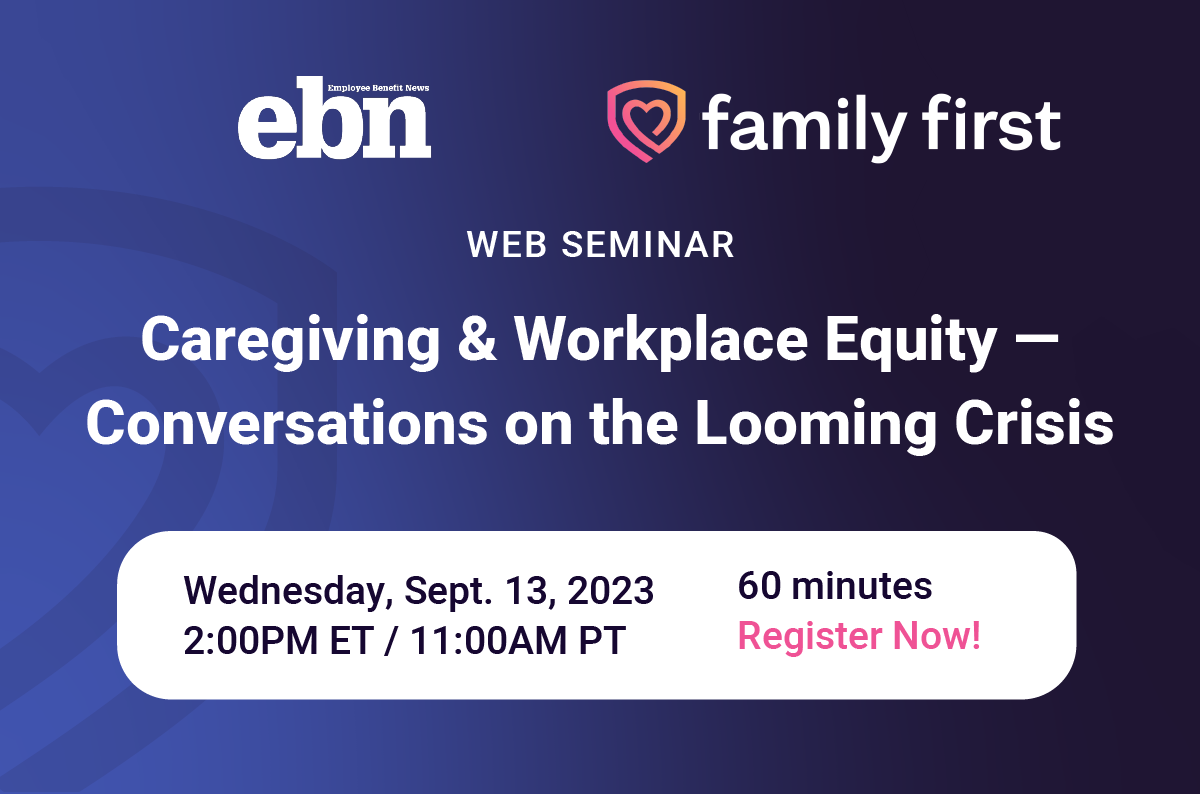The Working Caregiver – A Looming Crisis
 The Urban Institute reports that the number of Americans 65 and older will double by 2040. Our country’s aging population, combined with the number of people who are ill or disabled, is accelerating what has long been a challenge, to a state of real crisis.
The Urban Institute reports that the number of Americans 65 and older will double by 2040. Our country’s aging population, combined with the number of people who are ill or disabled, is accelerating what has long been a challenge, to a state of real crisis.
The current data is striking, with 1 in 5 full-time employees acting as working caregivers and over half (53%) of workers aged 40-49 self-identifying as caregivers. On average, working caregivers spend 20 hours a week or more providing care for a family member or friend with a serious illness, developmental disorder, or disability.
Working caregivers face an impossible balancing act, navigating between professional responsibilities, caregiving duties, and other demands of their daily lives. They often experience high levels of stress and even burnout, and many struggle to maintain job performance. And the financial impact is stunning. The Department of Health and Human Services reports that these families lose more than $522 billion in annual income yearly, measured by the hours spent on caregiving.
As the number of working caregivers rises, workplace experts and economists are increasingly concerned about impacts on the U.S. economy. The Credit for Caring Act, a new bill before Congress, cites a recent AARP report demonstrating major boosts to productivity, stating that the U.S. GDP could grow as much as $1.7 trillion by 2030 if caregivers 50 and older have access to support in the workplace. By 2050, experts predict that number could increase to $4.1 trillion.
“Caregiving has a profound impact on millions of working Americans and the companies where they work. Employers have a tremendous opportunity to help their workers—and their own bottom line—by helping their workers facing caregiving responsibilities.” – Evan Falchuk, CEO, Family First
Understanding the Caregiver Demographic
Recent data shows that people with caregiving responsibilities are the fastest-growing category of employee identity groups. The numbers may seem overwhelming, but diving into specific aspects of the working caregiver population can provide valuable insights for developing strategies to better support these employees. For example:
- People of color and immigrants shoulder a disproportionate share of the caregiving obligation
- The average caregiver is a 49-year-old woman providing a parent 20 hours of unpaid care a week
- Women are three times as likely as men to retire early for caregiving reasons
Clearly, working caregivers fall into a population that is already underserved. As we better understand working caregivers' unique challenges and characteristics, workplace experts are turning to solutions rooted in diversity, equity, and inclusion (DEI).
Solving the Working Caregiver Crisis
Inclusive benefits are designed to create a workplace culture that respects and values employees from all backgrounds and life circumstances. Like other DEI strategies, these efforts can build engagement, protect productivity, and support the well-being of working caregivers.
“Working caregivers are often hard to identify within an employee population. They may face stigma or fear losing their jobs. Integrating caregiver strategies into DEI initiatives can help remove these barriers to create a culture of support, the first step toward helping these valuable team members.” – Alaina Melena, Family First SVP of Innovation and Strategy
By extending the principles of DEI to accommodate the needs of working caregivers, organizations can provide a supportive environment that acknowledges the unique challenges they face, including:
- A shift away from the "always-on" work culture that exacerbates the challenges of working caregivers. This pivot requires adopting adaptable approaches, such as encouraging managers to set realistic expectations and promoting flexibility with variable hours, regular breaks, and reduced meetings.
- A supportive working caregiver network is vital to creating programs that support the whole Caregivers handle numerous practical tasks and heavy emotional burdens. Establishing employee resource groups (ERG) where caregiver employees can connect, share experiences, and access professional advice can make them feel understood and valued. Regular virtual or in-person meetings, blog-sharing, and expert insights offer a support system acknowledging their contributions.
- Prioritization of mental health and self-care is crucial. Employers should foster an environment where caregivers feel comfortable discussing their mental well-being and are encouraged to take time off when needed. Implementing additional paid leave for caregivers, providing mental health days, and offering other benefits like exercise and sleep programs can promote better health.
The intersection of caregiving responsibilities and professional careers poses a significant challenge for the millions of working caregivers in the U.S. Implementing policies and benefits tailored to working caregivers’ needs demonstrates an organization's commitment to inclusivity and fosters a culture of support, empathy, and understanding. By offering comprehensive programs and focused care paths tailored to each person’s unique caregiving situation, companies support employees so they can thrive personally and professionally regardless of their circumstances.
Do your employees need more than a service that identifies resources? Family First uncovers and solves the real problems of working caregivers and their loved ones. Learn more today!
Upcoming Webinar
Ready to learn more about how to better support the working caregivers in your organization? Join us for our Employee Benefit News web seminar “Caregiving & Workplace Equity – Conversations on the Looming Crisis” on Wednesday, September 13th at 2PM ET.
Register Now!

